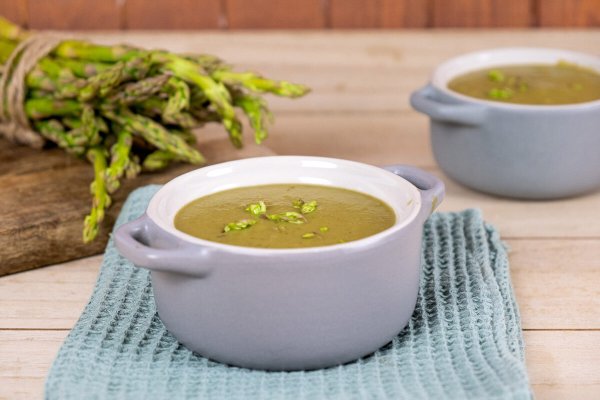









Listen and Subscribe: Apple Podcasts | Spotify | iHeart | Google Podcasts
You certainly plan out and build up your own food storage for winter, but have you considered your animal’s food storage?
Winter should be a time for rest, relaxation, and reflection, so the last thing you want to be doing is scrambling around trying to manage your barn and homestead through the snow and ice and frigid temperatures.
In this episode of the Pantry Chat, Josh provides three core strategies to help you take stock of your winter needs, be more efficient and save money to make the overall winter management of your homestead easier and more enjoyable during the season.
In this Episode
- Why stocking up your barn should be very similar to stocking up your pantry.
- The process of moving from pasture to indoors and the steps you’ll need to take to ensure your animals have everything they need.
- Why going week to week is so much more costly.
- Why doing your research today is critical and a good place to start to determine how much feed you’ll actually need.
- How much feed does an average cow consume and other feeding rules of thumbs for livestock?
- How to determine how much you need to buy in bulk and the different ways you can save on delivery.
- Why it’s a good idea to start keeping records of how much you’re buying and using.
- The importance of providing salt and minerals to keep your animals healthy during the winter months and why you need to determine what elements are lacking in your particular area.
- How to ensure your water supplies are adequate for your animals.
- Why the right bedding for your barn is so important and the benefits of using wood shavings over straw to manage the waste.
- Why your nose is a good indicator for determining how much bedding you need.
- What is “economy in motion” and does it matter where you put your feeders?
Resources:
- MadeOn skin care products (use code “homesteadingfamily” for 15% off your purchase)
- Follow Homesteading Family on Instagram
- Follow Homesteading Family on Facebook
More Livestock Videos & Posts
- Rotational Grazing for the Small Homestead
- Everything You Need to Know About Raising Meat Chickens
- Raising Backyard Egg Laying Chickens
- How to Ferment Chicken Feed for Cheaper Healthier Chickens
- Chicken Tractor Basics & What to Consider When Building One
- Using Chickens to Restore the Land
- Pantry Chat Q & A – 9/28/2022
Josh: Hey guys, this is Josh.
Carolyn: And Carolyn.
Josh: With Homesteading Family, and welcome to this week's episode of The Pantry Chat, Food for Thought. And I wanted to take a few minutes and give you guys a few tips about stocking up your barn, making the overall management of your homestead during the winter, a little more enjoyable.
Carolyn: This episode of the Pantry Chat Podcast is sponsored by MadeOn Skincare. MadeOn specializes in skincare, specifically for dry skin, and they use as few ingredients as possible to get the job done. You guys, this is the type of skincare I would make myself if I had time to make it in my own home and the great thing is, Renee even shares her exact recipes with you. The Bee Silk lotion bar is my go-to lotion when my hands get dry and cracked, and it's only made with three ingredients. Renee created it when she needed something to fix the splits in her fingers, cracks in her feet, and then she found out that it also worked great on her son's seasonal eczema. Go to hardlotion.com/homesteadingfamily to find out what Josh's favorite MadeOn products are, and also use the code homesteadingfamily for 15% off today's purchase.
Josh: Hopefully if you've got animals, you're already doing this and some of these tips will help. If you are thinking about animals, or if you are buying feed week to week or month to month, a few of the strategies here I'm going to share with you are going to really help you with some cost savings, time efficiency, and just making the overall management of your homestead during the winter, a little more enjoyable. So stocking up your barn is very similar to stocking up your pantry. We've got to feed ourselves so we're quite used to thinking about how much food do we need, where am I going to put it? How am I going to get it? What does it cost me? Things like that.
Often with our animals, as we're moving from pasture or outdoor systems to indoors or preparing for winter, we have a rough idea, but we're kind of just constantly scrambling. I've done that in the past. I know a lot of people that I still watch do that. They spend all winter going back and forth getting their hay. Even though they've stocked up their pantry, even though maybe they've stocked up their freezer, they're still treating their animals on a week-to-week basis, going to the grocery store every week and getting the feed they need and that's a rough way to go. It is stressful. It takes more time and it costs more money. So we want to find some ways to create some better economics and some greater efficiencies that's going to help you take better care of your animals, better plan for the winner, save you money, and just help you be a little more overall relaxed during winter when hopefully we're getting a break instead of stressing and worried about running out and getting chicken feed and hay in the middle of a storm.
So if you're going to stock up your barn or your homestead, you've got to have a place to put it first, right? But how much space is it going to take up? If you haven't figured out how much neat you need, you don't even know how much space it's going to require to stock up your hay for the winter or your chicken feed, because it's going to be a lot. It's going to take up a lot more space than it takes to fill up your pantry and so one of the first things we've got to do, if you haven't done this is take your daily feed needs and translate that into what's probably several months. For us, we figured a cover about six months. That gives us a little bit of leeway on the edges in case our winter goes long. Usually it's four and a half to five months where things are really tough, but then hay isn't coming up for quite a while after that and it takes a while even for the pasture to get up before we can get the animals out.
So you need to know how long you want to be able to feed. For me, I want to try to cover winter. I want to make his winter as easy as possible so that I can take a break. And again, I'm not worried about having to run out and get feed during the winter time in the middle of a storm, bad weather, whatever is going on.
So how do you figure out how much feed you need? Very similar. If you have done this for the pantry, if you've gone through your household and tried to figure out what your food needs are so you can figure out how much meat to put in the freezer, or how many cans of beans to put up, or how much grain to put in the bulk bin. You've got to figure out how much everybody eats and then extrapolate that out. So for animals, there's a lot of information out there and you're going to have to do some research. I'll give you a couple of rules of thumb here to get you started to think about, but every animal is different, every environment is different and so your particular needs are going to be different. So you've got to do your own research based on the type and age of livestock you have, the environment that you live in, and the living conditions during winter time of your animals.
But a couple of things that you'll find pretty easily is cows. A non lactating, average sized cow is going to eat about 25 pounds of quality, dry matter. Quality hay a day, all right. There's going to be some waste so we're going to add a little bit onto that and call it 30 pounds. 30 pounds is about 900 pounds a month. I go ahead and figure for about a thousand pounds a month, round that up. I'd rather be safe than sorry. Now, if you've got a lactating cow, you're going to add a little bit to that as well. Whether that's in extra hay or in supplement in the manger while you're milking her. So you've then got to figure out your grain or we use mostly alfalfa pellets with a little bit of grain because we don't want the cow to consume too much grain, but you've also got to figure that out. And again, that's going to depend on your animal and your conditions, but you get the point, okay.
Figure out how much that animal consumes sheep or about five pounds a day, or about five average sheep to one cow. And usually we're feeding them the same type of hay so you can do the same thing with your sheep, or if you have less than five, you can divide that up and figure out how much you need, same with goats. Goats are probably going to be in the same amount. From the research I've done, because I don't keep goats, it's somewhere right in the same range. But again, you got to check it out, because there's a lot of difference in size and goats, milk production, plus your own environments. But when you do that, you can... just talking about hay, you can figure out, okay, here's how much hay for I need for a month. Here's how much hay I then need for four months, five months, maybe six months then you can go out and shop and see what you can find in a bulk deal. And by buying hay by the ton instead of the bail, you're going to save yourself quite a bit of money. Now you can either have it hauled in, that can be a little expensive depending on how much you need or you can bring it in yourself, hopefully you've got a trailer and hopefully you have a place to put it. But that's just one way to think about cows.
Now for your livestock that uses grain, like your chickens. Chickens need a quarter to a third pound a day. Again, that's a general rule depending on other factors like the size, the housing that they're in, your environment, how cold your winter is. And so you've got to take those general rules of thumb and then apply it to your situation. Keep records over time and as you keep records and track things, you'll just get better and better at this. But these type feeds, you can see I've got over here, I just brought in over 4,000 pounds of feed and that's to feed primarily our chickens and our ducks and geese and little bit of grain, a little bit of dairy ration for the cow, just to keep her happy, give her a few treats and alfalfa pellets. That's what we primarily feed in the manger when we're milking, that just gets her some really good quality, condensed protein besides the alfalfa and grass hays that we feed.
So again, you've got to take that, figure out how many animals you have, how's that working on your farm and figure out what you need for that time period. Now, again, this is where you can do really, really well on bulk buying. By buying all of that for our next six months, I saved over 10% buying it in the bags. Here we have a local grain supplier and a feed mixer, and they supply feed in 1000 and 2000 pound totes. Now I'm not set up to handle those yet, but if I was, and I could have bought those, it would've saved me 30% from buying it by the bag, a couple of 50 pound bags at a time. That's a huge savings and it is worth figuring out how to be able to handle that, how to be able to transport it and how to be able to store it on your property, whether it's in the barn or a feed shed or somewhere else. Maybe your garage, I don't know. But when it comes to feeding animals, there is a real economy to stocking up.
All right, another really important aspect of stocking up your barn is salt and minerals. Your animals have got to have salt and minerals to get them through the winter. They should have salt and minerals all the time. Pretty much all of our pastures, all of our soil is depleted and so hopefully from your chickens on up to your cows and everything in between, they are getting some sort of mineral supplementation. Now there is a huge variety of ways to supplement and perspectives on this. What we do, what I've done for over 15 years that works really well is I free feed and I free feed salt, Redmond mineralized salt and kelp. We have had very, very good success with animal health with those two things.
Now you need to know your area a little bit when you're mineralizing, some areas have very specific deficiencies, and if you're not aware of any, make sure you check with your local agricultural extension, find out. In our area, we're deficient in selenium and that's fairly common because I can buy salt from Redmond that is augmented with selenium for our area. So make sure that when you are mineralizing in your animals, you're knowing their needs. You can get really, really specific. Some people mineralize each individual core mineral by tray, and that has worked really well for some people and they say that's better because the animals can free feed, take what they need. I've not tried that, I've known some people that have tried it and have had mediocre success and I know some people that have had great success. The kelp is a broad spectrum, mineralizer and with that and the salt we have had great success. So whatever it is, you need to have an idea of your animals, how much they consume. Ours tended to consume a little bit more in the winter time. Generally hay ground is pretty deficient, and they're living off this hay so they tend to need a little bit more. And again, you want to try to stock up and bulk by on that if you can.
Another key element is water. Making sure that your water supplies are adequate. Of course you want good functioning water. If you're in a freezing environment, you either want frost-free bibs or you want some sort of system to keep your water from freezing and accessible to your animals. Deicers are very handy. We keep the deicers in our troughs and I also want a trough that is large enough to hold water for well over a week for whatever animals I'm watering. I sure don't want to be watering every day. And so a cow say, drinks about 10 gallons a day, a lactating cow can drink up to 20 gallons a day and so I want to make sure that Tilly here has got at least a hundred gallon trough and that's going to get her about 10 days. I like her to drink it down a ways so that we can either empty it or refill it, but that helps freshen it up and keep it fresh instead of topping it off every day. It also just makes our chores easier.
So whatever it is, make sure you're thinking about your water systems ahead of time. For our chickens, we take a five gallon bucket and put some of the nipples in the bottom of them and that works great for us. They've got some round little deicers, for us it gets really cold, that you can just set in the buckets. I found that to be... those aren't super cheap, but they're a little more cost effective and easier to use than some of the other chicken waters that have deicers built into them. I just haven't found any of those that I like. The five gallon bucket with the nipples and an in-water deicer thing that heats up the water works really, really well. You just got to make sure you get the right thing. You don't want one in there. It's going to melt the plastic or obviously you've got a problem.
Okay guys. So one other really, really important component to your barn or your animal system and getting stocked up is bedding. You're bringing your animals in close. They're no longer spreading that manure out around the pasture or around a large chicken coop. They're spending more time indoors, closer confined and if you don't do something to manage the waste, you're going to have a stinky mess on your hands, right? And so we've got to manage that and that is actually a problem, the manure is a problem that is a huge opportunity in that you have the opportunity to create compost with your chickens, with your cows, with your sheep, with your pigs. It's a great opportunity to create compost if you do it well. And so for that, you need good bedding.
Our two main sources of bedding are either wood shavings or straw and both work well. I prefer the wood shavings. The wood shavings are smaller. They're more absorptive because they have more surface area and they are easier to work with. The straw's got less surface area, it's also got that sheen to it, it's got a coating on it. It doesn't absorb moisture as well and if you have ever a pitchforked much wet, heavy manurey straw, it is a pain to deal with. So I really recommend wood shavings. If you don't have a source, look around in your area and see if you can find a woodworking shop or a cabinet shop, particularly hardwoods that deals with maples and birches and cherry and different woods like that. And you want the smaller shavings, but most of them from a woodworking shop are great.
Of course, if you don't have a lot of animals, you can buy those in bales. It's just, if you starting to do a lot of volume and you're working with a barn, that gets pretty expensive. So I created a trailer. I'll try to get a picture of it for you and put it up here. A long trailer of mine that I put plywood boards on and was able to go and find a cabinet shop. They actually were used to vacuuming all of that out and storing it and hauling away by truck anyways. And we paid to have those trucks in the summer bring some in for mulching in the garden and different areas on our property but we were able to go down there and fill up our own trailer, park it in the barn. And we've got shavings. It's the first year we're in this barn all winter so we'll see how long it lasts. Maybe I'll have to go out, maybe I won't, but I'm just using what I have to get the most in here and get it stocked up.
So really, really you need to have a way to manage that manure. And here's a rule of thumb to know how much. People say, well, how much do I use? I know how to figure out how much hay I need, but I have no idea how to figure out how much bedding I need. Well, that's going to be trial and error for you, but a rule of thumb is if it ever starts to smell in your barn, you've got a problem. It's too wet. There's too much nitrogen. If you're starting to get that sulfury smell, that stinky smell, you do not have enough carbon. You're not getting betting into the stalls. And so you need to add more. And over time, you'll figure out how that works. But that is a great rule of thumb that is going to help keep your barn manageable, help keep your animals healthy. If that starts getting stinky, you've just got all kinds of problems coming your way that you don't want. So make sure you're getting enough carbon in there and you gauge that by your nose.
Now, if you've got a lot of animals, that's going to really fill up, we try to clean them out regularly. Right now we have an area away from the barn that is going to be a future garden site. One of the kids just does chores, takes a wheelbarrow out a day, dumps it out there, adds in shavings. That keeps it from building up too much. Once it comes to winter, we've got a spot right over here in the barn, we're actually going to start to compost it and experiment with composting in the barn to generate a little bit of residual heat and that's an experiment that will be neat to see how that goes, but once the snow gets on the ground, we won't be able to wheelbarrow it out.
Now, some folks actually leave it in and let it stack up. And if you've ever seen what Joel Salitan does in his hay shed, they actually layer it up. They, I believe throw some corn in there and throw in their wood shavings and they actually let it build up and let the pigs in there in the spring. And we've got some similar plans here that I will share with you once we get it going but that's another great solution. But if you are going to let it build up, you have to plan for how tall that's going to get because it can go up pretty good. And I believe, using Salitan as a reference, his feeders will move up as the ground gets a little bit higher in there. So make sure you think that through, but make sure you're getting good bedding in your barn. You're keeping it clean. You're keeping your animals healthy. Let your nose be your guide.
Those are some of the core elements to think about when stocking up your barn or your property to get ready for winter. Now, one other thing I want to encourage you to think about is economy of motion. That can be challenging depending on the setup of your property, how it was when you got there, the way you've set it up. But the closer the feed is to where we need it, the less work for us. And I'll tell you, I don't know about you, but I have hauled hay from under tarps, through deep snow to get it where it needs to go and sometimes we just got to do what we got to do, but hopefully over time we get a little smarter and we develop systems that make it easier for us. Again, I want winter to be a time of rest and relaxation and reflection.
So what we've tried to do and what we're developing in our barn here is getting that feed as close as I can. And if you can see, I've got the hay stacked right down the middle of the breezeway, I have it far enough away from the animal stalls that they cannot reach their head and get through to it, but I can pull the hay down and throw it right here and I've got the feeder set up so that the cows and sheep can stick their heads out and eat right here. It is very, very easy to feed and you don't even have to have a barn to do this. Even if you've got a hay shed or you can put a hay shed somewhere close to where your animals are, say maybe you even have to tarp it. Do it as close as you can and make as little steps as possible in getting that feed from the storage facility to the animal.
It's the same, say with our chickens, we've got a large 40 gallon free feeder that we fill up. That stays in there, that only has to be filled up about once a month and our feed's here in the barn. It's not very far to haul it from where it's at right now, right over here to the chicken coop. Think about your economy of motion and how you're setting up things and plan out your space and that is going to make the feeding a lot easier and a lot more enjoyable. Okay, you guys, I hope those tips helped. Remember to do your research and take these general rules of thumb and figure out what you need for your animals.
Thanks for listening to this episode of The Pantry Chat Food for Thought. If you've enjoyed this episode, please subscribe, rate, and review.
Carolyn: To view the show notes and any other resources mentioned on this episode, you can learn more at homesteadingfamily.com/podcast.
Josh: We'll see you soon.
Carolyn: Goodbye.
Sign up to receive email updates
Enter your name and email address below and I'll send you periodic updates about the podcast.
















